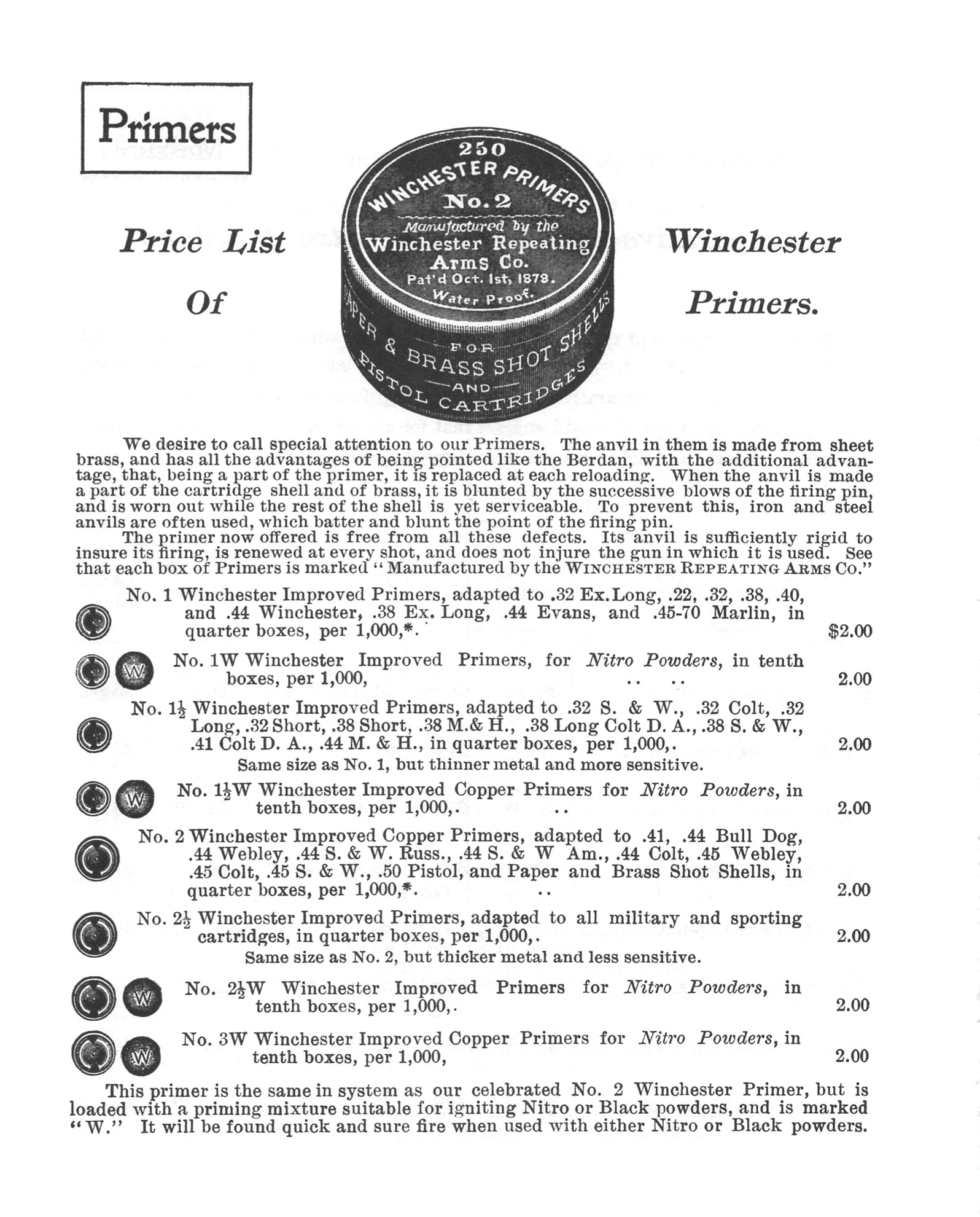Large Pistol Primers in Black Powder Loads
other By: Steve Garbe | December, 25
Lately, I have noticed some shooters talking on the internet about using large pistol primers in their straight black powder loads. This was something I experimented with extensively in the late 1980s, given that large pistol primers are a “softer” primer than standard or magnum large rifle versions. My rationale was that the modern large pistol primers were similar in strength to the old black powder primers. In my testing, I noticed that magnum primers, when used in the .32-40 particularly, seemed to blow the powder column and bullet forward before the case walls had time to grip the chamber. Stretched or separated cases were quite common unless a heavy crimp was used on the bullet. This was especially true when using breech-seated ammunition that had little or no compression on the powder column.
My tests showed a marked increase in accuracy (via much lower standard deviation and extreme spread readings), especially in cartridges like .32-40 and .38-55. In newer editions of the Black Powder Cartridge Reloading Primer 9th Edition, I recommended their use for best accuracy with some caveats.

Some shooters have suggested that seating the large pistol primer flush with the face of the cartridge rim will keep the primer seated on the breechblock face, eliminating dimpling. If the cartridge case has tight primer pockets, this will work but, in most cases, the primer is driven forward by the firing pin (especially in a somewhat loose primer pocket) and then backwards into the breech face by the powder gases. Other riflemen have used a card wad in the primer pocket itself to bring the primer cup up to the correct height. I have not experimented with this technique as I think that the wad would buffer the firing pin blow on the primer anvil, resulting in inconsistent ignition.
One approach to using large pistol primers is to utilize a shallow rim cut in the chamber, which necessitates facing off the cartridge rim face to allow chambering. This means that the primer pocket is now the correct depth for large pistol primers with no danger of dimpling. Generally, one needs to shallow-chamber by .010 inch to allow for the difference in height between large rifle and large pistol primers. Barrels should be obviously marked as having the shallow rim cut to prevent attempts to chamber large rifle-primed ammunition.
Some cartridges are offered by manufacturers with either large pistol or large rifle primer pockets. Years ago, I believe Federal offered .30-30 cases with small rifle primer pockets and I turned a good number of these into .32-40 “short” cases. The small rifle primer was perfect for black powder, breech-seated ammunition.
In some cartridges, simply using standard large rifle instead of large rifle magnum primers will result in lower standard deviation readings, especially in cartridges larger than the .40-65 or .40-70. Heavier bullet weights, neck tension, alloy hardness and the presence of a crimp will all affect “load inertia” and consequently chronograph readings, generally lowering standard deviation. The primer and its relative strength are a major component in the formula for “good numbers.”

